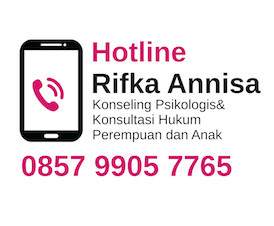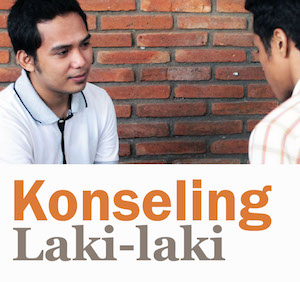By : Laksmi Amalia
This email address is being protected from spambots. You need JavaScript enabled to view it.
The number of women living with HIV and AIDS are increasing sharply since Luc Montaigner first found this disease in the early 80’s. Based on the report from UNAIDS which was published in 2009, there was 15,7 million women living with HIVand AIDS in 2008. Ministry of Health reported that in 2009, out of 19.973 people living with HIV and AIDS in Indonesia, a third of them are women. Unfortunately, these women do not know that they are infected with HIV because in the early stage of infection, the patients are asymptomatic. Sometimes, they just have flu-like symptoms, but when they meet the doctor, they are diagnosed as having a common cold. Moreover, the women do not take an early detection of HIV and AIDS because they do not feel that they have the deviant behavior. However, in fact, many women living with HIV and AIDS are infected from their couple because of changing sexual partners a lot or sharing needles. Then, the women usually realize that they are infected in the late stage when an infection such as oral candidacies and pulmonary tuberculosis appear.
The increasing number of women living with HIVand AIDS probably could increase the number of infected children because the pregnancy, the delivery, and the breastfeeding process could raise the chance of the babies to be infected by HIV and AIDS. In addition, when women have the HIV and AIDS, many problems are related with their status such as the discrimination and the reproductive right. Even, their role and right as a mother could be disturbed because they suffer from this disease. Therefore, nowadays, there should be special attention to the women’s problems related to HIV and AIDS that could be overcome by the preventing program, early detection, and appropriate treatment of this disease.
Women are prone to be infected by HIV virus type 1 and 2 which could attack their immunity system from blood transfusion, sharing needles, and sexual intercourse. Whether the women are housewife or sexual workers they are more prone to be infected from unsafe sexual intercourse because they are in the receptive side. It means that in anal, vaginal and oral intercourse the women have the higher risk to get the infected semen and this fluid could penetrate easily because the mucosa of vagina and anus of women are thinner than the skin of penis. Unfortunately, many housewives do not know about the sexual and consumption drug history of their husbands, so when the couple does sexual intercourse they do not use the condom to protect themselves. In addition to housewife’s problem, the sexual workers could not force their sexual partners to use the condom in every sexual intercourse because their clients sometimes refuse to use this protection device.
Therefore, every woman is prone to be infected by this disease nowadays. In Yogyakarta, the number of housewives infected by HIV increased 14 % and their husbands infected them. This fact makes the handling of the disease from the prevention until the treatment stage should be done in the wider area, not only limited in the localization but also in the urban and rural area where the population live. This appropriate approach is very important because there are many problems that the women should face when they are infected with this disease.
First, their problem is discrimination. They are prone to lose their jobs or find difficulties to get them. Furthermore, they are also discriminated when they seek medical service because of their status. For example, when they are pregnant and want to do the antenatal care, some doctors and midwives sometimes refuse them. Second, the women living with HIV and AIDS could get the bad stigma from the people around her because some people suppose that this disease is related to deviant behavior. Third, when a woman has AIDS they are prone to get the opportunistic infections, which relapse easily. Therefore, they sometimes could not do their role as a mother responsible to take care of her children. The last and the most important problem are about the reproductive problem because the women are usually infected in their reproductive age. The women living with HIV and AIDS still have the right to have a child, but they have greater responsibility. Besides that, the couple should think about their children owing to the risk of spreading the infection and possibility of their children to be orphans. The physicians should suggest the husband who has HIV and AIDS to do sperm washing since this procedure could choose the healthy sperm from the infected semen (Djauzi, 2010). Then the sperms meet the ovum by in vitro fertilization or the sperms are injected into the fallopian tube of the woman by the insemination process. Furthermore, women living with HIV and AIDS should consume the ARV (Anti Retroviral Drug) without considering their CD 4 counts, which describe their immunity status, and they should prevent the infection when they are pregnant. They also deliver the baby with caesarian section to reduce the direct contact between the vaginal mucosa and the baby. Even though this process could spend much time, money, and sometimes both physical and psychological burden, it is the most effective way to reduce the risk of baby to be infected HIV from their parents.
Nevertheless, it is better for the couple living with HIV AIDS not to have children to reduce the likelihood of children to get HIV and AIDS. This pregnancy prevention program is also complicated as only the condom that could be the most effective contraception for the couple with HIV and AIDS due to the bad effect of contraception pill and IUD (Intra Uterine Device) which could disturb the effect of ARV. Condom could prevent the unwanted pregnancy, decrease the risk of sexual transmitted disease related with AIDS, and prevent the unwanted mutation between the HIV viruses. Moreover, in fact, some ARVs could affect the normal menstruation cycle of the women.
Therefore, there should be enough reproductive information, education, and counseling for the women, so when they know that their husbands or themselves are in the high risk to be infected with HIV and AIDS, they could do VCT (Voluntary Counseling and Testing) individually or together with their partners. In addition to the counseling program, the women should be encouraged to examine their reproductive health to the gynecologist routinely if they are sexually active. For the women living with HIV and AIDS who decide to have children they should do the PMTCT (Prevention of Mother to Child Transmission) with appropriate concern from their physicians. Furthermore, there should be enough support from their family and people around them to combat the stigma in order to provide the opportunity of empowering women with HIV and AIDS.
In summing up, the prevention, early detection, and appropriate treatment programs are the keys to solve the problems of women living with HIV and AIDS. There should be also enough information, education, and counseling programs that are related to HIV and AIDS. The right approaches might help Indonesian government to combat HIV and AIDS as stated as one of the Millennium Development Goals.







